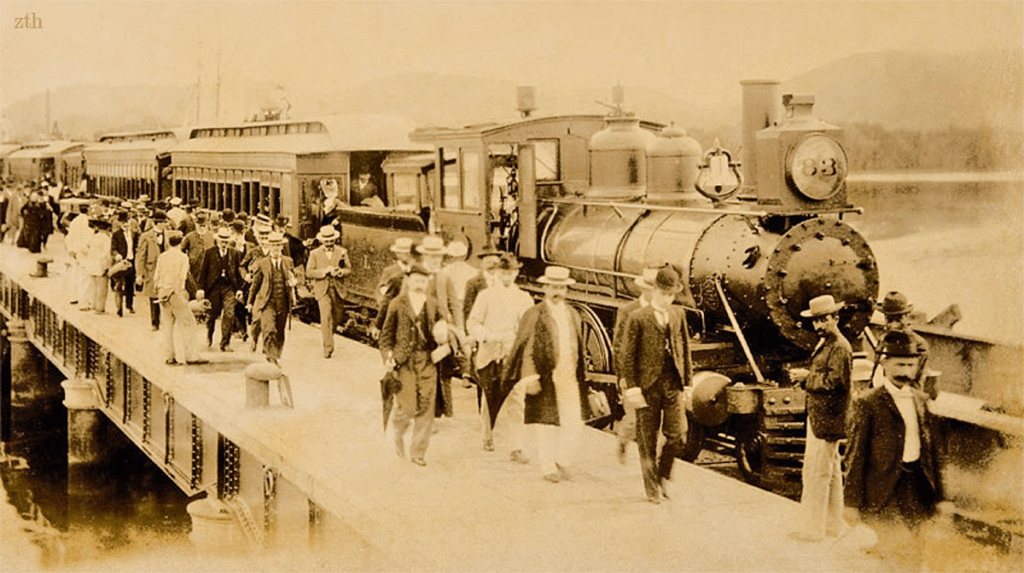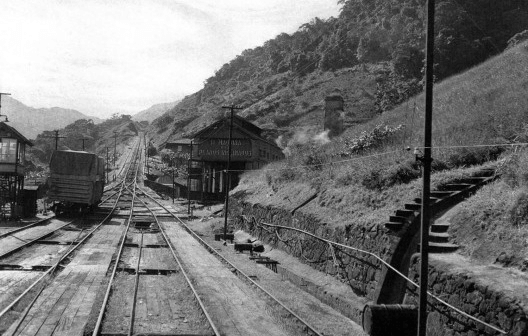
Ancient railroads: Which are the best known

Much of what the railroad sector has today is due to the old railroads. They played a fundamental role in the development of this mode of transport, working at a time when trains were the main form of transport, both for goods and people.
The history of the railroads is quite extensive and important for us to understand how this mode of transport was established in Brazil, and also to understand its transformations over time. You can learn more about histories of railroads..
In summary, the old railroads have a very interesting history, starting in 1854, with the beginning of the operations of the Mauá Railroad. The primary function of the railroads at that time was to take the main extracted products, such as sugar and later coffee, for internal consumption.
Obviously, there have been major changes in the sector. New technologies have been implemented, the infrastructure has been modified, the mode of operation has become more efficient and the main components, such as the tracks and trains, have changed a lot since the first railroad that was built.
Unfortunately, the railroads suffered from a dismantling process, especially in the middle of the last century. With the expressive growth of investments in the construction of highways, the railroad sector ended up becoming precarious and still suffers today with the lack of significant resources for its resumption.
For this article, we selected 3 old railroads that were fundamental for the development of the sector, and played essential roles for the country's economic growth, as they were the main means of transportation in Brazil in the late 19th and early 19th centuries. of the 20th century.
Content Index
Estrada de Ferro Mauá

The Mauá railroad is the first railroad in Brazil and one of the main old railroads. Implemented in 1852 and starting operations two years later, in 1854, the railroad played an essential role in the economic advance for the country, which was going through a transition to become a republic.
The road had the function of connecting the Port of Mauá, in Magé (RJ), to the municipality of Fragoso. At the time, it was built with a capacity of 14.5 km in length.
This railroad, which is part of the framework of old railroads, and is one of the most important, precisely because it started operations in this sector, was built by Irineu Evangelista de Sousa, the Baron of Mauá.
The railroad sector was already presenting itself as an important solution in other countries, mainly in Europe and the United States. It is precisely for this reason that the entrepreneur Irineu decided to implement this new business, bringing a new perspective to national production, since from that it became possible to take the inputs produced more easily.
The Estrada de Ferro Mauá followed a specific route: it supplied the trains in the coffee plantations in the Paraíba Valley, going on to the city of Magé. From there, the products were positioned on boats to reach the city of Rio de Janeiro.
This practice greatly facilitated the transportation of coffee, which was the main product of the domestic and foreign market. Before, this transport was done by animal traction, taking a long time and facing greater difficulties than on the old railroads.
The operation of the Mauá railroad lasted until the end of the imperial period, in the middle of 1888.
São Paulo railroad

The São Paulo railroad was the first of the old railroads to be inaugurated in the state of São Paulo. The line connected the municipality of Jundiaí and others nearby, to the São Paulo coast, mainly in the city of Santos.
Its operations began in 1867, 13 years after the first of the country's old railroads began to operate.
Again, Barão de Mauá, Irineu Evangelista de Souza played an important role in this construction. It was he who realized the need to build a railroad that would connect this region of the state of São Paulo to the coast of São Paulo, ordering the beginning of studies on the spot to see this possibility.
In 1860, he was given the concession of the line that would be built. With the help of English companies and businessmen, the São Paulo railroad was inaugurated for use in 1867. It is precisely because of this important participation of the English, that the railroad receives its name. "railroad" means road in the English language.
As in the other railroads that were being built, the São Paulo railroad had coffee as its main product, and it was fundamental for the great expansion of this input, especially in the beginning of the 20th century.
The main stretch operated until 1946, but parts of that stretch are still used in a variety of ways, such as train stops (Estação da Luz), museums or places to preserve historic heritage.
Central railroad of Brazil

The Central railroad of Brazil was one of the most important national railroads during the 19th and 20th century. The road, which before the proclamation of the republic in 1989, was called Estrada de Ferro D. Pedro II, and was responsible for connecting the states of São Paulo, Rio de Janeiro and Minas Gerais.
Estrada do Ferro Central do Brasil was an ambitious project, which sought to make this railroad the “backbone” of the Rio de Janeiro rail network, making connections with different parts of the country.
The work started in 1855, and the first section was completed in 1858, this being the third railroad that was inaugurated in the country. This stretch, which connected the city of Rio de Janeiro to the region of Freguesia de Nossa Senhora da Conceição de Marapicu, now Queimados, was over 48 km long.
During the governmental transition process in Brazil, which ceased to be an empire and became a Republic, this railroad underwent lengthy expansion procedures, aiming to cover more municipalities.
For a long time, this railroad was one of the main old railroads in the country. Its operations lasted until the mid-1930s, when the main station, located in Rio de Janeiro, was demolished for the construction of Avenida Presidente Vargas.
Conclusão sobre as estradas de ferro antigas
Several old railroads have been part of the history of the railroad sector. Obviously, there is no room to talk about all of them, but we can conclude that, the scenario that we have today in the railroad sector, is largely due to the beginning of the first constructions, such as those of the railroads that we mentioned throughout our article. In addition, it is essential that we keep the memory of these old railroads alive, and precisely for this reason, many of them have become museums or even have exposed structures so that people can learn a little more about this important national historical collection.
Searches: http://museusferroviarios.net.br/antigas-companhias/sao-paulo-railway/
https://portogente.com.br/portopedia/109992-ferrovias-brasileiras-conheca-fatos-historicos-curiosos
https://www.preparaenem.com/historia-do-brasil/a-primeira-estrada-ferro-brasil.htm












